🎯 ADHD Memory Reset: How the SIPSLOW Method Helps You Finally Remember & Focus
💬 The 7-step system blending science, self-awareness, and sensory learning to help ADHDers retain and recall like never before.
🌟 Ever feel like your memory and focus betray you at the worst moments?
You meet someone new… and forget their name instantly.
You start explaining something… and your mind blanks out halfway.
💭 “Why can’t I just remember things like everyone else?”
This is the reality of ADHD working memory struggles — but there’s a fix.
Meet the SIPSLOW Method, a simple yet powerful framework designed by Dr. Tina Schneider, Ph.D. to help ADHDers remember, process and communicate information better, faster, and with less stress.
Let’s unpack what it is, why it works, when to use it and ADHD-friendly ways to apply it daily. 💪
📝 What You’ll Learn
🧠 What the SIPSLOW Method really is (and what it’s not)
⚡ The core advantages for ADHD minds
🧭 When to use it in real life
🎬 A real Before & After example
🔬 Science-backed research (with links!)
✅ ADHD-proof strategies to apply today
📋 A quick cheat sheet
🛠️ Practical tools for daily use
🔥 A final pep talk for your brain
🧠 What is the SIPSLOW Method?
The SIPSLOW Method—developed by Dr. Tina Schneider, Ph.D.—is a structured, brain-based approach that helps ADHDers strengthen their working memory, focus, and communication.
It stands for:
→ Sensory Input
→ Processing
→ Short-term
→to Long-term
→ Optimize Memory
→ Working memory ✅
At its core, SIPSLOW teaches you how to take in information, encode it effectively, and recall it when you need it — all by harnessing your unique sensory strengths.
🌈 Key Advantages for ADHDers:
✨ Better Recall – You remember names, ideas, and steps with ease.
✨ Improved Communication – You stay present in conversations instead of zoning out.
✨ Reduced Overwhelm – Sensory structure helps your brain focus on one channel at a time.
✨ Easier Transitions – Moving from learning → memory → action feels natural.
✨ Confidence Boost – You start trusting your brain again.
🔗 Learn more directly from the creator: Dr. Tina Schneider
🔗 Learn more directly from the creator: Dr. Tina Schneider on Wise Squirrels Substack
🧭 When You Need SIPSLOW
The SIPSLOW Method shines when ADHD working memory or attention are stretched thin.
Use it whenever you feel that fuzzy “I know this but can’t recall it” moment creeping in.
💡 Best moments to apply SIPSLOW:
📞 During Conversations:
When names, details, or key points start slipping — use sensory anchoring (look, repeat, or jot down a cue).
🎓 When Learning New Info:
While studying, watching tutorials, or in meetings. Translate content into your sensory format (draw it, say it, move through it).
🧩 When Overwhelmed by Tasks:
Chunk your to-do list into sensory-friendly mini steps — visual icons, verbal affirmations, or physical actions.
🎙️ When Speaking or Presenting:
Use notes, gestures, or sound cues to keep ideas flowing and memory steady.
💬 When Connecting with People:
Combine hearing, seeing, and doing — it strengthens memory and helps you stay emotionally present.
✨ The beauty?
You can use SIPSLOW anytime your brain feels scattered, overloaded or blanking out.
⏰ How It Helps ADHD Brains
ADHD brains often struggle with:
⚠️ Forgetting names or tasks within seconds
😵 Feeling overwhelmed by new information
⏳ Losing the thread mid-conversation or project
The SIPSLOW Method fixes this by:
Leveraging your sensory strengths (visual, auditory, kinesthetic)
Creating multi-sensory anchors for better memory
Structuring information flow from short-term → long-term
Reinforcing working memory pathways through active recall
👉 In short, it teaches your brain to slow down, process, and store smarter.
🔬 The Science Behind SIPSLOW
1️⃣ Working Memory in ADHD
ADHDers often experience deficits in working memory — the brain’s temporary storage. Using multi-sensory encoding improves memory retention.
📚 ADHD & Working Memory Research
2️⃣ Multi-Sensory Learning Boosts Retention
Combining senses (e.g., seeing + hearing + touching) activates more neural pathways, improving recall.
📘 Multi-Sensory Learning Study
3️⃣ Cognitive Load Reduction
Breaking info into structured sensory chunks reduces overload, improving focus and task completion.
📖 Cognitive Load in ADHD Research
4️⃣ Dr. Tina Schneider’s Research
Her work bridges neuroscience and practical ADHD communication tools, explaining how sensory awareness + structured recall = better focus and confidence.
📎 Dr. Schneider
✅ How to Apply SIPSLOW (Step-by-Step)
🎯 1️⃣ Sensory Input
Identify how your brain prefers to learn:
👀 Visual → Write, draw, color-code
👂 Auditory → Speak aloud, repeat, record voice notes
🤲 Kinesthetic → Use gestures, move, or act it out
🎯 2️⃣ Processing
Transform info into meaning: summarize, create analogies or teach it back.
🎯 3️⃣ Short-Term → Long-Term
Reinforce through spaced repetition: review after 10 min, 1 hour, 1 day.
🎯 4️⃣ Output
Actively recall — say it, write it or demonstrate it.
🎯 5️⃣ Working Memory Optimization
Chunk steps, externalize notes and use visual aids or checklists.
🎬 Before & After Example
🚫 Before SIPSLOW
Task: Remember 5 new colleagues’ names.
🌀 Brain: “Too many!” → Forget 3 instantly → Awkward silence → Self-doubt.
✅ After Using SIPSLOW
Write each name (👀 Visual)
Say them aloud (👂 Auditory)
Associate each with a funny gesture (🤲 Kinesthetic)
Result: You remember all 5 names confidently. ✨
💬 “I finally stopped dreading introductions.”
📋 Your Quick SIPSLOW Cheat Sheet
🌀 When you feel forgetful or scattered:
🔹 Identify your best sensory channel
🔹 Encode info with 2+ senses
🔹 Chunk it down — small wins > big overwhelm
🔹 Review later (10 min / 1h / 1 day)
🔹 Recall it out loud or through writing
🔹 Celebrate every memory win 🎉
🔍 Find Out More About the SIPSLOW Method
🎯 Aim of the Method:
Dr. Tina Schneider’s designed the SIPSLOW Method to help ADHD brains retain, process and express information more effectively by aligning memory, attention, and communication through multi-sensory engagement.
It’s not about doing more — it’s about remembering smarter and performing with clarity and confidence.
🧩 Explore More Resources:
🔗 Dr. Tina Schneider’s
Explore her research on sensory memory and ADHD-friendly learning structures.
🔗 ADHD & Working Memory Explained – ADDitude Magazine
A foundational explanation of how ADHD affects working memory and recall.
🔧 Practical ADHD Tools to Pair with SIPSLOW
🛠️ For Focus: Forest App, Pomofocus, Flowtime
🛠️ For Visual Structure: Notion, Trello, Obsidian
🛠️ For Recall Practice: Quizlet, spaced repetition apps
🛠️ For Body Doubling: Lifeat.io, Focusmate
🛠️ For Memory Anchoring: Sticky notes, color pens, movement cues
🔥 Final Thought
ADHD brains aren’t broken — they’re wired for creativity and depth.
They just need the right system to translate brilliance into action.
✨ SIPSLOW helps you slow down to speed up.
✨ It turns chaos into clarity and confusion into confidence.
✨ Every time you remember, focus, or express yourself clearly — you win.
You’re not just coping. You’re upgrading your brain’s operating system. ⚙️
💬 What’s one memory or communication win you’re proud of today?
👉 Drop it in the comments — let’s celebrate together! 🎉
📢 Share this with someone who struggles with ADHD memory or focus.
💌 Like this? Subscribe to ADHD Wisdom Tools for daily ADHD-friendly tools, insights, and encouragement.
🐱 SIPSLOW isn’t about doing more — it’s about remembering smarter.
Try one sensory strategy today and watch your brain light up. ⚡
Take care,
Lud


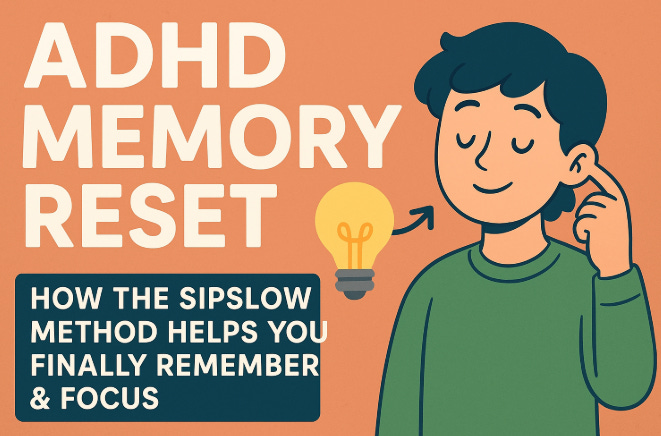
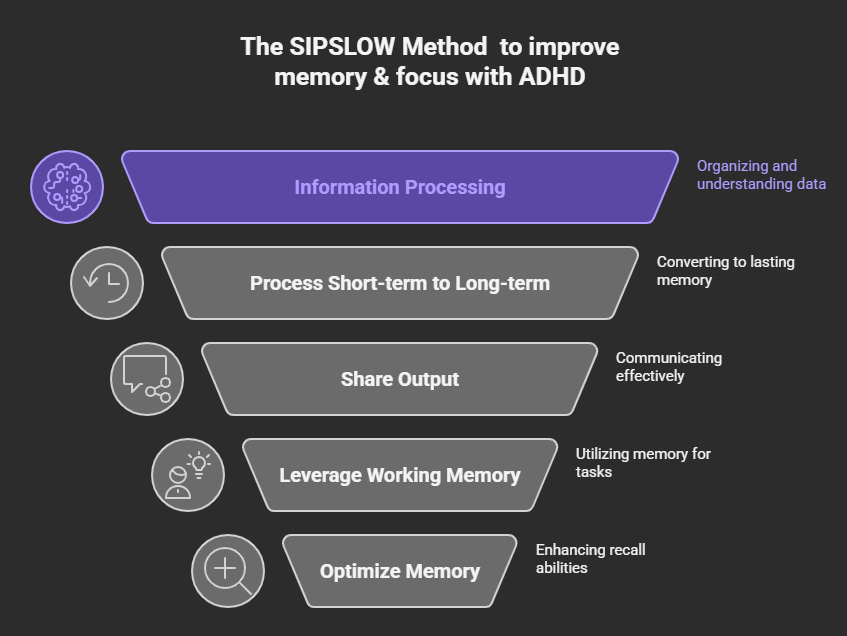

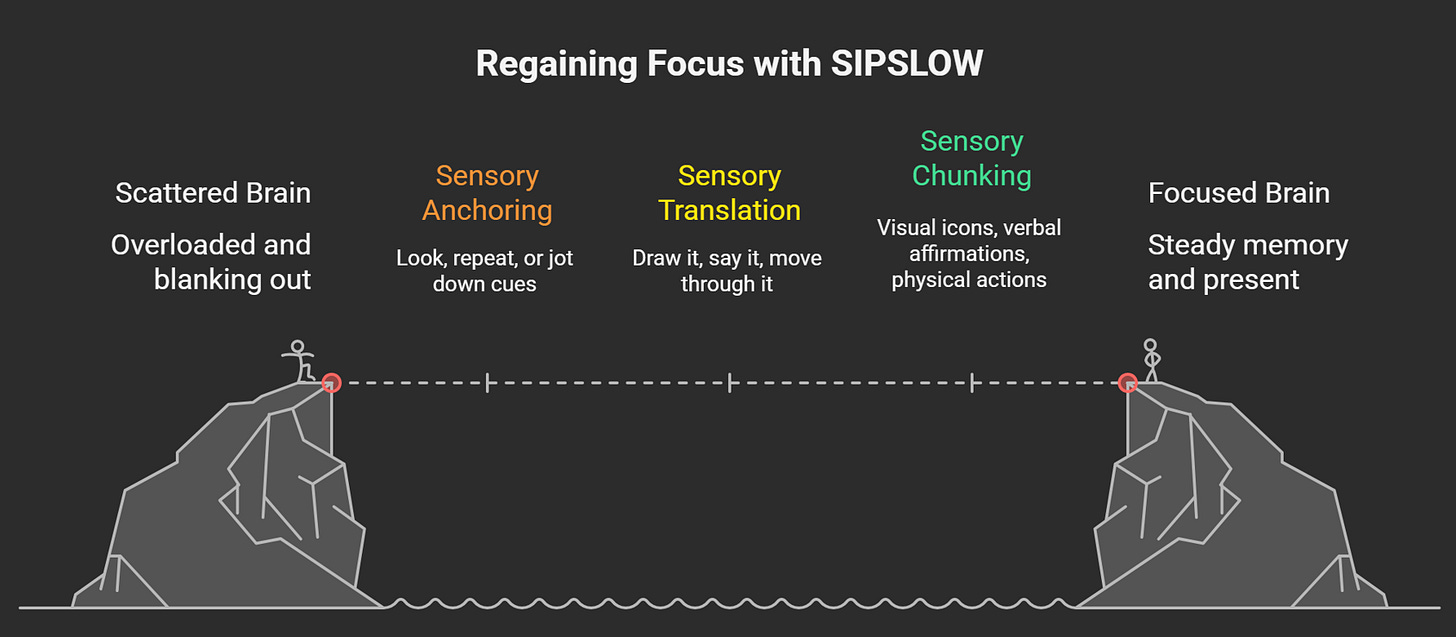
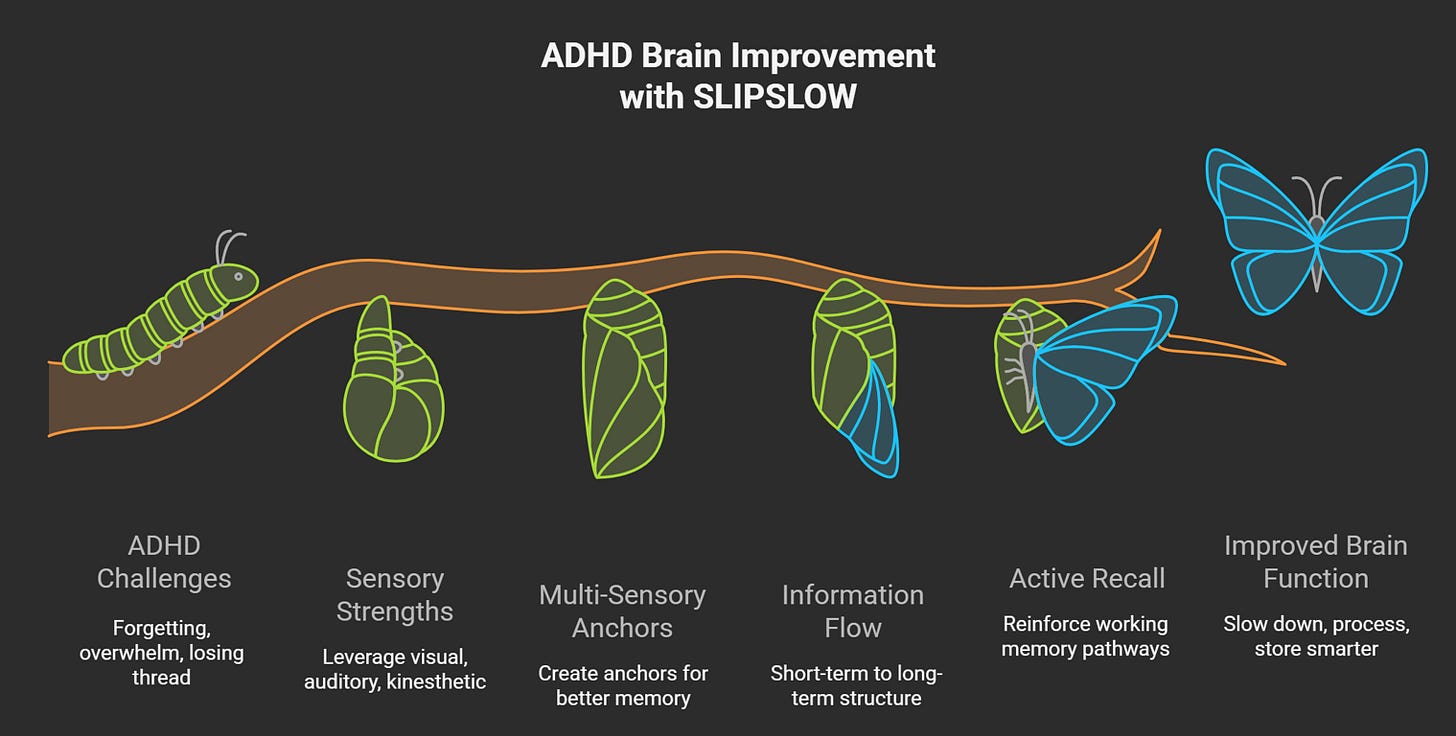

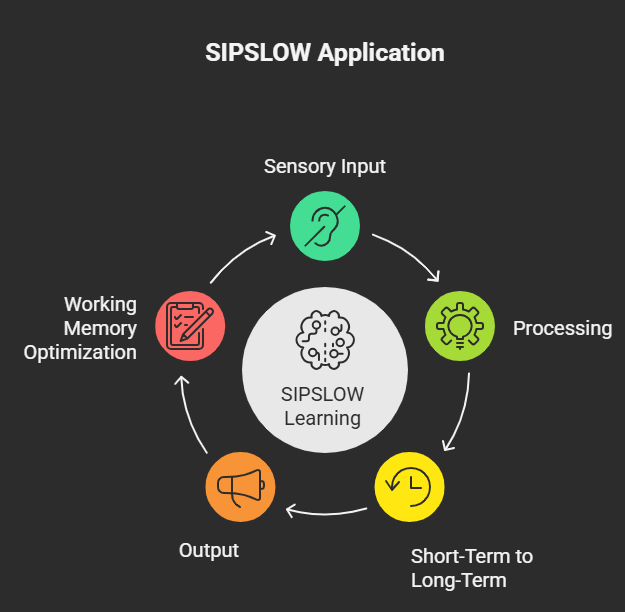
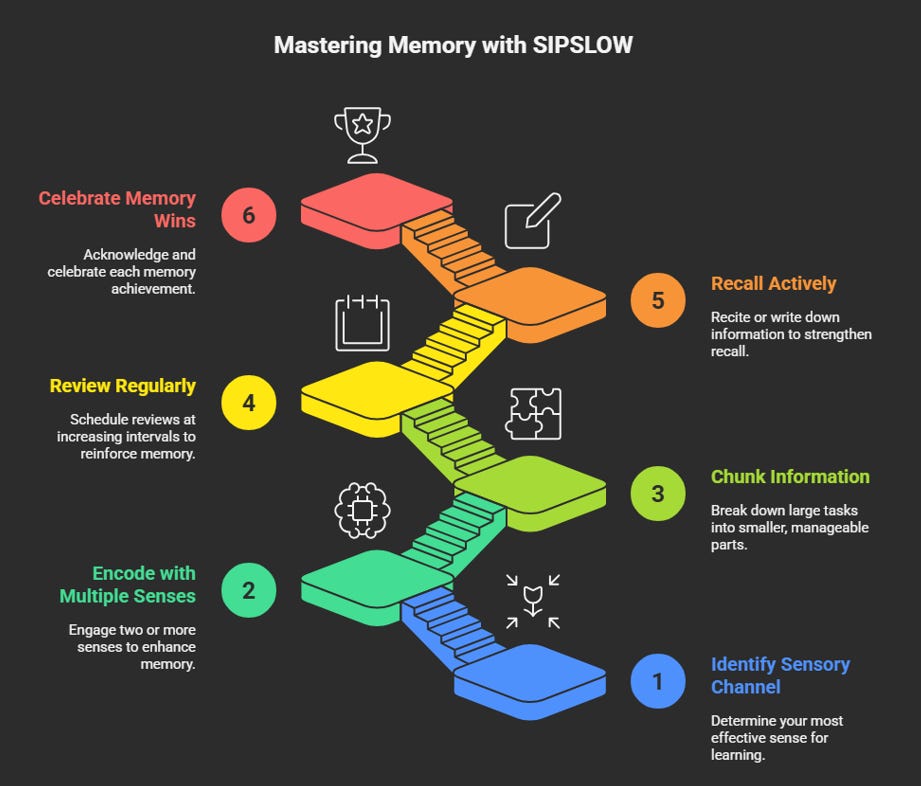
Awsome post I may have to do this exercise because this is something I struggle with
Thank you so much for sharing this.